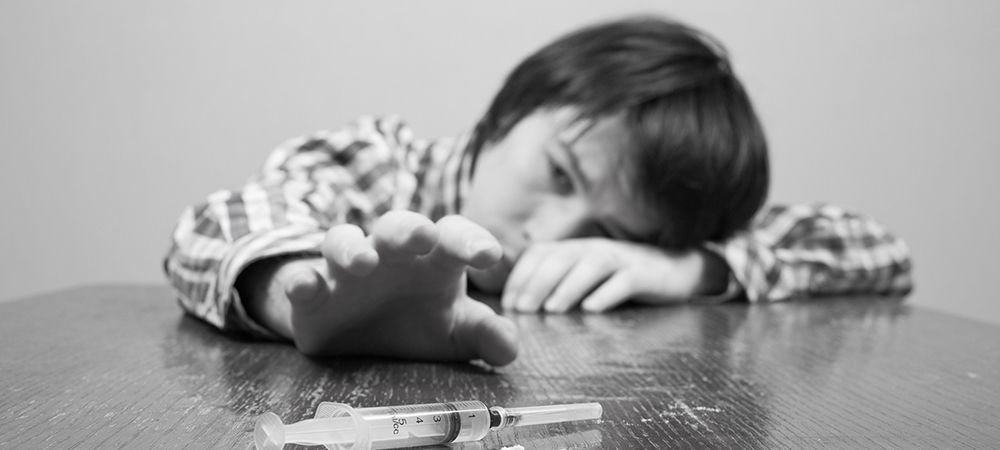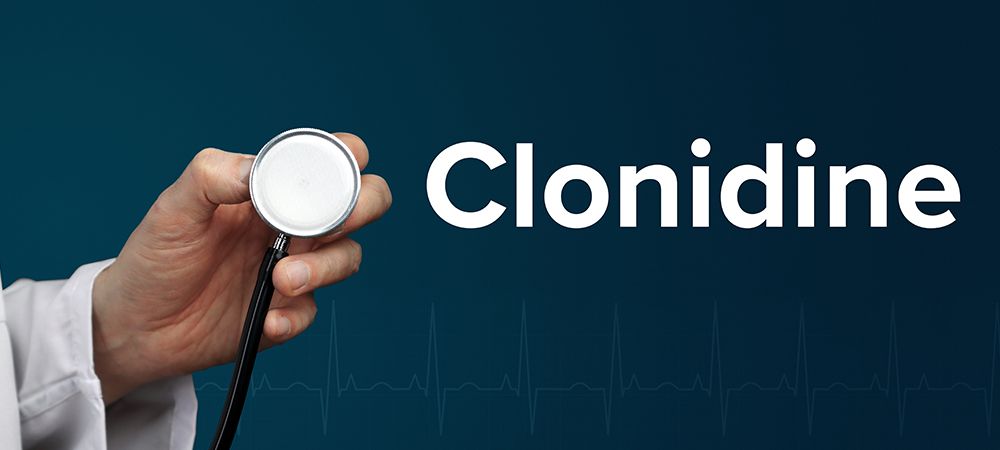Opiate withdrawal symptoms are what you experience when you quit the use of opioids. These symptoms are very uncomfortable and, at worse, detrimental to your health.
Opioids drugs such as morphine and oxycodone can help with pain, especially during surgery. As prescription opioids, they are often safe to take for a short period as administered by a doctor.
However, some individuals use the illegal form (heroine) or abuse their opioid prescriptions. Doing so can lead to opioid addiction. When addiction sets in, you can’t just stop using opioids suddenly.
The timeframe for opioid withdrawal varies depending on the type, period of opiate addiction, the presence of other controlled substances. Through this period, you’ll need a dedicated opiate detox program to help you manage the symptoms of withdrawal. Professional detox can help you recover comfortably and safely.
The causes of opiate withdrawal are numerous. But it’s mainly a result of your body’s dependence on the drug. Because you’re dependent on opiates, your body tries to adjust without it.
In this blog, we’ll discuss opiate withdrawal symptoms — how bad they can get and how to treat them.
What is Opiate Withdrawal?
Opiates are strong medications for pain. They include fentanyl, morphine and oxycodone. These medications are highly addictive. They work by attaching to the receptors on the nerve cells in your spinal cord, brain, and other affected areas.
By attaching to these receptors, opiates can block feelings of pain. They also trigger the release of dopamine in your brain to make you feel happy.
People who take opiates for a long period form a physical dependence on them. By this we mean, they can’t function normally without the drug. When they try to quit its use, they experience uncomfortable symptoms in its absence.
Opiate withdrawal often occurs when you reduce how much of it you take or use. The symptoms depend on several factors like the kind of drug used, your current tolerance to opiates, length of substance use and of course, whether it was abused alongside other substances.
Opiate withdrawal is difficult to manage without medical help. During withdrawal, you may feel weak and ill or experience common flu symptoms like sweating, vomiting and fever.
Although opiate withdrawal isn’t life-threatening, you can suffer great psychological and physical problems. As a result of the symptoms, you’re at risk of using the substance again to prevent the withdrawal procedure.
Unfortunately, the endless cycle of quitting and resuming opiate use may make it more difficult for you to stop. For this reason, it’s highly recommended you undergo opiate detox to withdraw safely.
Symptoms of Opiate Withdrawal
Notwithstanding the type of opiate in play, the withdrawal symptoms are similar and vary from severe to mild. Opiate withdrawal symptoms are more severe in people suffering from acute substance abuse. For instance, individuals who consume a large number of opiates over a long time will have to deal with higher health risks.
Other factors also determine the type of symptoms you may experience. A person with an underlying health issue is likely to have adverse symptoms compared to a healthy individual.
Your family health history, mode of taking the drug and mental health further determine the severity of your symptom. Below is a combination of symptoms you’re likely to experience after your last dose of opiates.
- Restlessness
- Anxiety
- Vomiting and nausea
- Insomnia
- High body temperature
- Runny nose
- Increased blood pressure
- Diarrhea
- Bone pain muscle spasms
- Constructed/dilated pupils
- Sweating
- Agitation
- Abdominal cramps
- Tremors
- Yawning
- Chills
- Watery eyes
- Goosebumps
- Rapid heartbeat
- Shaking
- Seizures
- Hallucinations
- Body ache
Keep in mind that these symptoms can occur within 12 to 24 hours after using the final dose.
Timeframe for Opiate Withdrawal

Opiate withdrawal symptoms may last for a few days in some people and weeks in others. Most individuals who experience the worst symptoms feel better within 1 to 4 days.
Heroin withdrawal symptoms occur within the first 6 to 12 hours after last use. Meanwhile, short-acting opiates like fentanyl, oxycodone and hydrocodone can cause withdrawal symptoms within 10 to 24 hours after the last use.
Keep in mind that these symptoms can last up to 10 days without detox. Long-acting opiates like methadone result in withdrawal symptoms about 36 hours after use and may persist for over 14 days.
Considering your addiction severity, you’re likely to experience acute withdrawal symptoms 6 hours after the last dose. During the acute opiate withdrawal timeframe, you’ll have flu symptoms.
| Stage of opiate withdrawal | Time it occurs | Kind of signs |
| Anticipatory | 3 to 5 hours after the final dose | The anticipatory period is usually associated with fear or increased anxiety because of the oncoming withdrawal symptoms. This period comes with substance-seeking behaviour and opiate cravings. |
| Early acute | 7 to 11 hours after final opiate dose | At an early acute stage, you begin to experience restlessness and anxiety. You may also suffer flu symptoms like sweating, vomiting, nausea, and abdominal aches. Drug-seeking behaviours and cravings may persist. |
| Fully-developed acute | 1 to 4 days after final opiate dose | During this stage, the symptoms are at their peak. They become more pronounced, which makes it difficult for you to hide them. You’re likely to experience muscle spasms, body pain, insomnia, diarrhea, and high blood pressure. At this time, your cravings for opiates are stronger. |
| Post-acute withdrawal symptoms (PAWS) | Within six months to a year after the final dose | Within the PAWS stage, you won’t suffer any acute symptoms. However, you’ll have drug dreams, cravings, anxiety, mood swings, depression, insomnia, agitation/irritability, and hallucinations. You’re also susceptible to triggers that can cause you to relapse. |
With all you know about what happens during opiate withdrawal, you can see how it can be tough to recover without medication. In the next section, we’ll discuss indicators that you’re indeed undergoing opiate withdrawal.
Related Article: Proven Treatments for Addiction Detox
How To Know You’re Experiencing Opiate Withdrawal
Not all effects associated with taking opiates are withdrawal symptoms. According to the American Psychiatric Association, there are four benchmarks for withdrawal:
- The symptoms interfere with your daily activities and cause problems in your life. For instance, they may cause a strain in your relationship with friends and family or affect your work.
- When you begin to experience up to over three withdrawal symptoms within a short time of quitting or cutting back, your opiate withdrawal is bad.
- Your symptoms aren’t occurring because of an underlying medical problem or mental illness. However, you have them because you stopped taking opiates.
- Experiencing symptoms after taking an opiate antagonist is a sign of withdrawal. An opiate antagonist describes a substance that offsets the effect of opiates. A good example is Naloxone.
Most doctors can determine the severity of your withdrawal symptoms through the Clinical Opioid Withdrawal Scale (COWS) test.
Effects of Opiate Withdrawal
Opiate withdrawal symptoms are not life-threatening. However, if you have underlying health issues, the effects can cause serious health problems.
For instance, increased blood or pulse pressure may be detrimental if you have a heart problem. Other effects of opiate withdrawal include:
- Diarrhea and vomiting. These may cause dehydration, heart failure and hypernatremia.
- Increased risk of abusing opiates after experiencing withdrawal because you have a lower tolerance.
- Pregnant women who are addicted to opiates may experience bleeding or leaky amniotic fluid.
How Professional Opiate Detox Can Help You
With medical detox, you can manage opiate withdrawal symptoms effectively. Professional detox offers you a safe environment to recover.
During medical detox, your doctor will prescribe a medication to lessen the severity of your symptoms and reduce cravings. After completing your detox program, your medical specialist may advise you to seek therapy at an inpatient program.
Inpatient rehab is an important part of a patient’s recovery process. It offers you sobriety and prevents you from a relapse. Plus, it benefits you with 24/7 medical oversight and emotional support from staff. Some of the treatments to expect during opiate recovery treatment include 12-step therapy sessions, behavioural and cognitive therapy, group and individual counselling.
Several inpatient programs also provide medical detox as part of their services. So it allows you to make a smooth transition within treatment programs. Detoxification programs may also include tapering as an opiate treatment option.
Tapering is a method of gradually reducing the dose until you stop taking the drug. Other times, the doctor may elect to manage your symptoms using opiate maintenance drugs like buprenorphine.
You may also be given ancillary drugs like clonidine and loperamide to provide relief for anxiety and diarrhea. Drugs like methadone and buprenorphine can help you curb your opiate cravings. It’s crucial to know that opioid detoxification using medications to treat your symptoms is only the first step to recovery.
Below are the popular medications for opiate withdrawal symptoms:
Methadone
Methadone was formerly the most common medication for opiate detox. But today, it’s replaced by buprenorphine.
Methadone is often administered to help people build a tolerance to the substance they abuse. Since it’s a long-acting opiate, it’s the most effective treatment option for individuals struggling with acute opiate addiction.
Clonidine

Clonidine treats high blood pressure and reduces the intensity of certain opiate withdrawal symptoms. It’s helpful in helping patients reduce their symptoms of fear, anxiety and stress.
Clonidine comes in the form of an oral pill and a skin patch. Unlike most opiate painkillers which cause euphoric feelings, it makes you calm. For this reason, it has minimal potential for physical dependence and abuse. Therefore, it’s easier for you to stop using after suppressing withdrawal symptoms. Clonidine is, in fact, the most effective medication which can help you recover safely.
Buprenorphine
Buprenorphine (a.k.a suboxone) is usually used to treat alcoholism. But recently, it has become a highly beneficial treatment option for opiate withdrawal.
Although buprenorphine is a partial agonist, it doesn’t mimic the effects of more potent opiates like hydrocodone. It helps to reduce your opiate cravings during the withdrawal process.
How To Get Through Withdrawal At Home
While it’s not the best option, at-home opiate detox may be the only option you have. In this case, all your doctor can do is prescribe medications to help you recover. To make your opiate withdrawal symptoms less severe, here are some essential things to do:
- Drink plenty of water or fluids
- Don’t use reverse medications.
- Eat a balanced diet
- Don’t use medications that’ll make you weak, such as muscle relaxers and sleeping pills.
- Get a take-home naloxone set in case of emergencies.
- Get enough rest
- Practice meditation, yoga, and acupuncture to remain calm.
- Don’t take illegal substances or drink alcohol.
- Participate in exercise, but don’t overstress yourself
- Speak with a professional on drug treatment options to enable you to remain drug-free.
Remember, opiate withdrawal causes you to build tolerance. Therefore, if you go back to taking a similar amount of opiate as you formerly did, you’re at a higher risk of relapsing and overdosing.
Related Article: Cost of Opiate Detox in Ontario
Conclusion
Opiate addiction is not a life sentence. Whether you’ve noticed your withdrawal symptoms recently or it has been persistent for a while, recovery is still possible. However, if you don’t treat the symptoms medically, they may lead to dangerous health conditions.
With our first-class opiate detox service, you can withdraw safely and comfortably. Let’s make this journey easier for you. Contact Medical Detox CA us to explore treatment options for opiate withdrawal.

